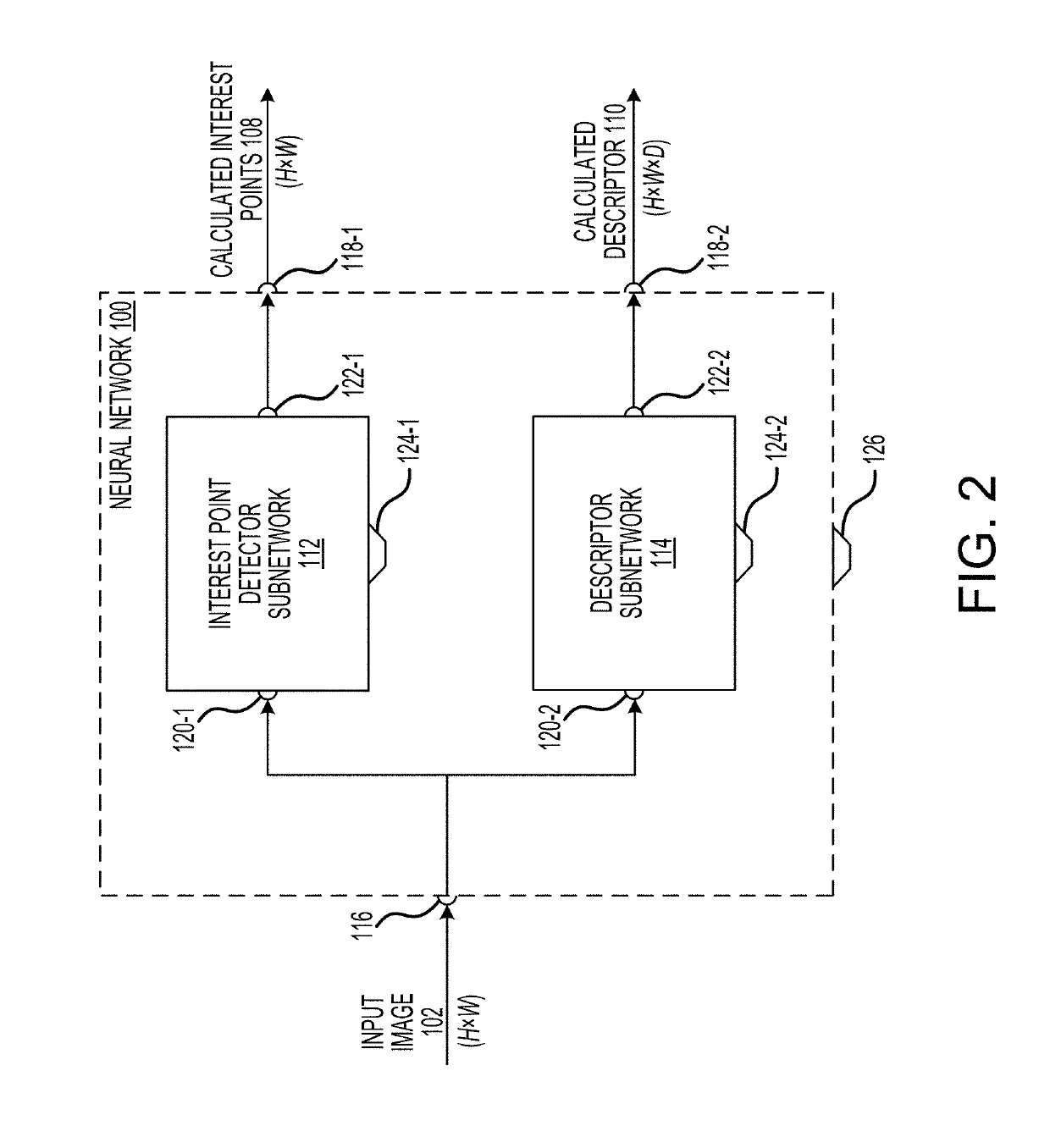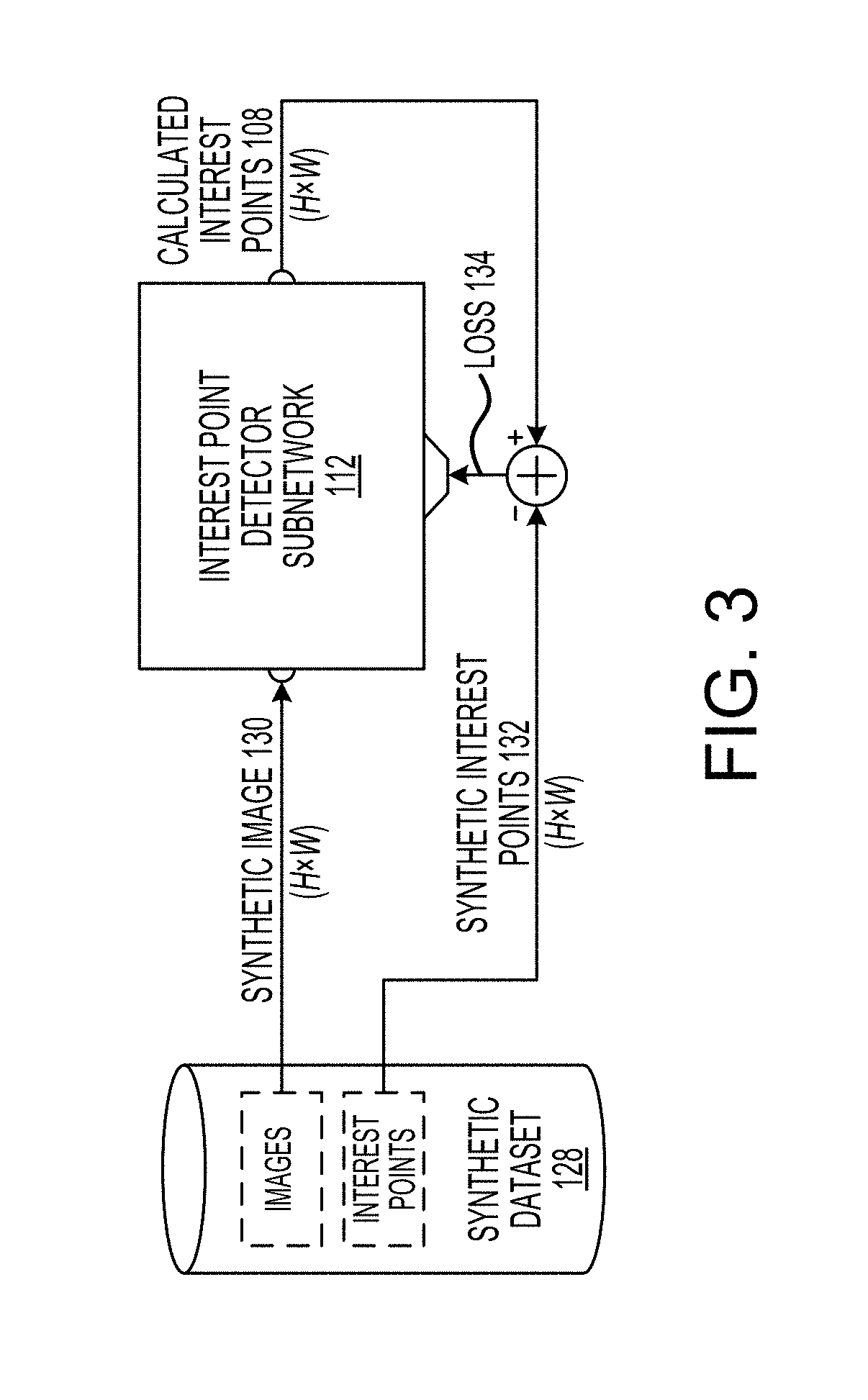Fully convolutional interest point detection and description via homographic adaptation
a homographic adaptation and fully convolutional technology, applied in the field of computer vision, can solve the problems of limited success, multiple detection approaches, raw input to most real-world computer vision systems, etc., and achieve the effect of boosting interest point detection accuracy
- Summary
- Abstract
- Description
- Claims
- Application Information
AI Technical Summary
Benefits of technology
Problems solved by technology
Method used
Image
Examples
Embodiment Construction
[0030]Convolutional neural networks have been shown to be superior to hand-engineered representations on almost all tasks requiring images as input. In particular, fully convolutional neural networks which predict two-dimensional (2D) “key-points” or “landmarks” are well studied for a variety of tasks such as human pose estimation, object detection, and room layout estimation. Some of these techniques utilize a large dataset of 2D ground truth locations labeled with human annotations. It seems natural to similarly formulate interest point detection as a large-scale supervised machine learning problem and train the latest convolutional neural network architecture to detect them. Unfortunately, when compared to more semantic tasks such as human-body key-point estimation, where a network is trained to detect semantic body parts such as the corner of the mouth or left ankle, the notion of interest point detection is semantically ill-defined. This difficulty makes training convolution ne...
PUM
 Login to View More
Login to View More Abstract
Description
Claims
Application Information
 Login to View More
Login to View More - R&D
- Intellectual Property
- Life Sciences
- Materials
- Tech Scout
- Unparalleled Data Quality
- Higher Quality Content
- 60% Fewer Hallucinations
Browse by: Latest US Patents, China's latest patents, Technical Efficacy Thesaurus, Application Domain, Technology Topic, Popular Technical Reports.
© 2025 PatSnap. All rights reserved.Legal|Privacy policy|Modern Slavery Act Transparency Statement|Sitemap|About US| Contact US: help@patsnap.com



